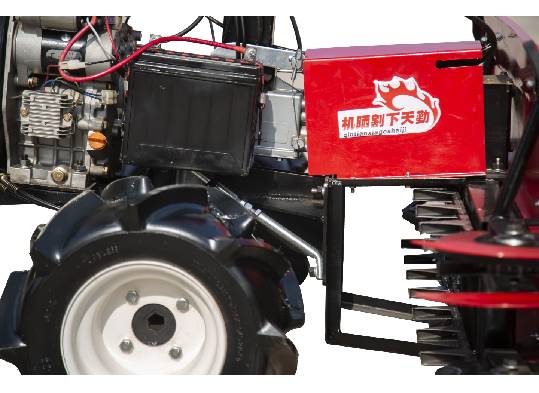paddy reaper and binder
The Paddy Reaper and Binder Transforming Agricultural Practices
Agriculture has always held a fundamental role in human civilization, and with the advancement of technology, farming practices have evolved significantly. Among the innovations that have transformed rice cultivation are the paddy reaper and binder. These machines have improved efficiency, reduced labor demands, and enhanced the overall productivity of rice farming, which is crucial for feeding the growing global population.
Historical Context
Traditionally, harvesting rice was a labor-intensive process requiring large teams of workers to cut and gather the crops. Farmers would manually use sickles to reap the paddy, which involved significant physical effort and time. This method, while effective for small farms, became increasingly untenable as agricultural demands grew; farmers needed more efficient solutions to keep pace with rising consumption and advances in cultivation techniques.
The Invention of the Paddy Reaper
The paddy reaper was developed as a solution to these challenges. This machine is designed specifically for harvesting rice, where the tall, water-loving plants grow in flooded fields. The paddy reaper employs sharp blades to cut the stems of the rice plants, and it can be adjusted to various cutting heights depending on the type of rice being harvested. This efficiency not only saves time but also minimizes the damage to the crops, ensuring higher yields.
One of the great advantages of the paddy reaper is its ability to operate in wet, muddy conditions, which are typical in rice paddies. Unlike conventional harvesters used for other crops, the paddy reaper is engineered to navigate these challenging environments. This adaptability has made it an invaluable tool for rice farmers around the world, especially in regions where traditional harvesting methods are burdensome and inefficient.
paddy reaper and binder

The Role of the Binder
Once the reaping is complete, the next challenge for farmers is to efficiently gather and bundle the cut rice stalks. This is where the binder comes into play. The binder is a complementary machine that collects the cut paddy and forms it into manageable bundles or sheaves. This process not only streamlines the workflow but also facilitates easier transportation and storage.
The paddy binder works by lifting the cut stalks and using twine to secure them into neat bundles. This standardization of storage units allows farmers to optimize their storage space and better manage their harvested crop. Additionally, binding the rice helps protect it from spoilage and pests, ensuring that the grain remains in good condition until it can be processed and sold.
Impact on Agriculture
The introduction of the paddy reaper and binder has drastically changed the face of rice farming. Labor costs have significantly decreased, allowing farmers to allocate their resources more effectively. The time saved during harvesting has enabled farmers to plant larger areas of land, thereby increasing overall production output. Furthermore, these machines require a smaller workforce, which can alleviate labor shortages in rural areas.
Moreover, the enhanced efficiency of the paddy reaper and binder contributes to sustainable agricultural practices. By reducing the time spent in the fields and minimizing the physical strain on workers, these machines make it possible for families to engage in farming without depleting their manpower.
In conclusion, the paddy reaper and binder represent a landmark advancement in agricultural technology. They not only improve efficiency and productivity in rice farming but also contribute to the sustainability of agriculture in a world grappling with food security issues. As global populations continue to rise, innovations like these will be essential in meeting the increasing demand for food while preserving the environment and supporting rural communities.
Latest news
-
When to Upgrade Your Old Forage HarvesterNewsJun.05,2025
-
One Forage Harvester for All Your NeedsNewsJun.05,2025
-
Mastering the Grass Reaper MachineNewsJun.05,2025
-
How Small Farms Make Full Use of Wheat ReaperNewsJun.05,2025
-
Harvesting Wheat the Easy Way: Use a Mini Tractor ReaperNewsJun.05,2025
-
Growing Demand for the Mini Tractor Reaper in AsiaNewsJun.05,2025







